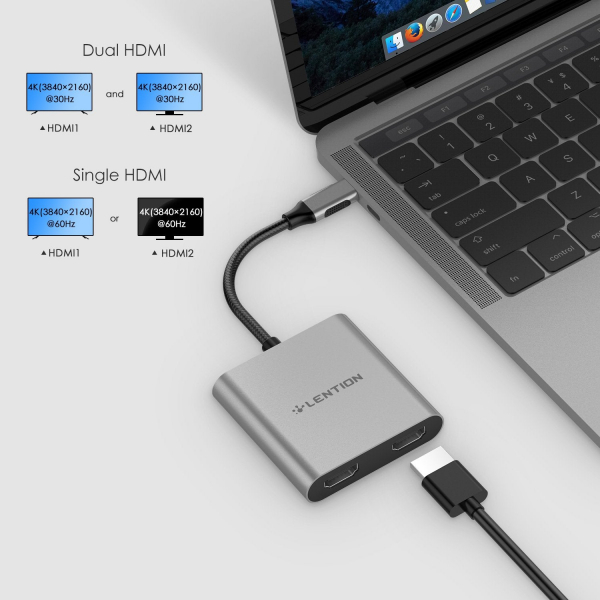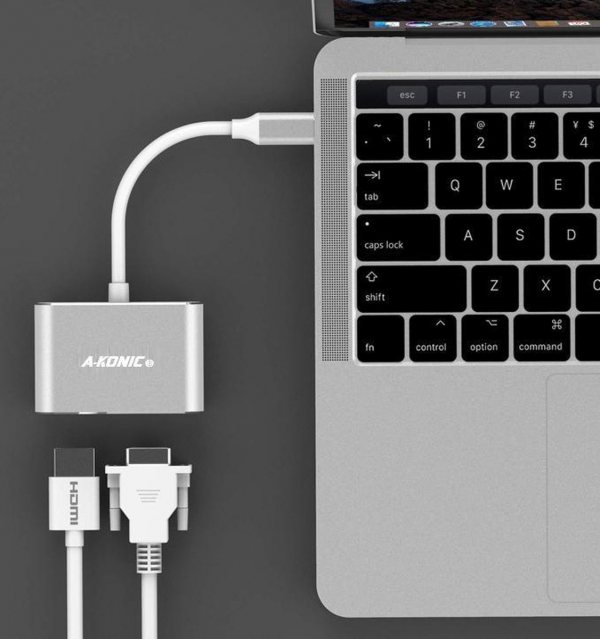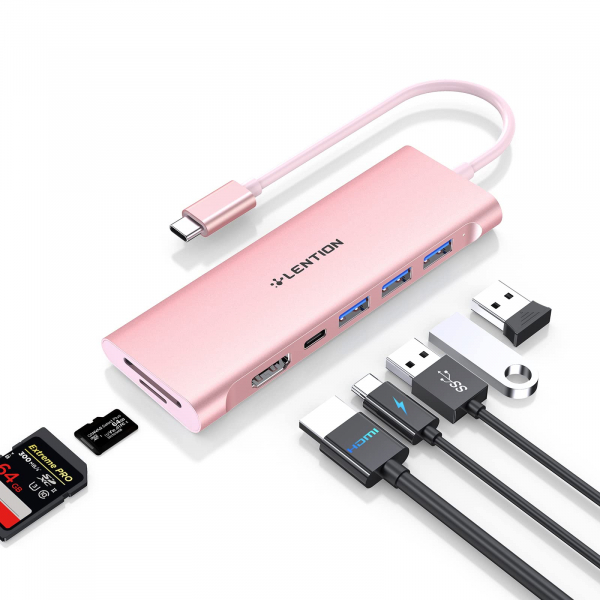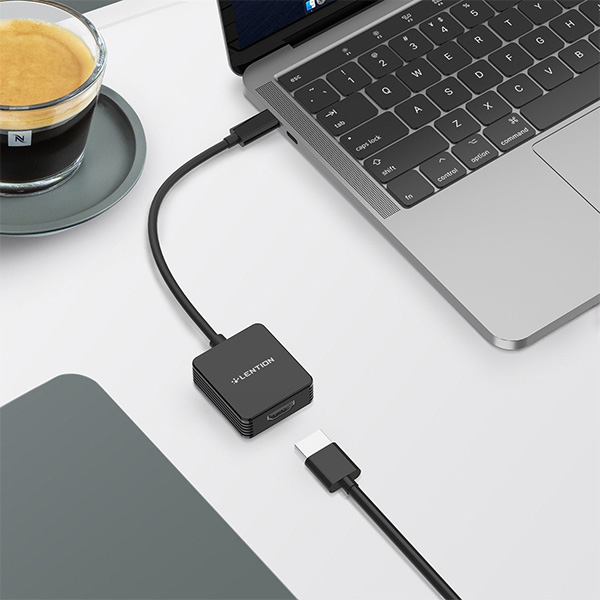How to Use a USB to HDMI Adapter
A USB to HDMI adapter takes video data from your laptop's USB port and converts it into HDMI-compatible video data. Once this is done, the HDMI side of the USB to HDMI adapter sends the data to a display device, such as a monitor, using an HDMI cable.
Quite simple, right? However, you need to consider a few things when using the adapter, including the USB port version, type, and in some cases, even the drivers. After you connect everything, there are still a few steps you need to take before getting the desired video output.
Things to Know Before Using
Before we start using a USB-to-HDMI adapter, gather the following resources:
If you are using a USB-C to HDMI adapter, ensure that the USB-C port on your laptop supports video data transmission. Not all USB-C ports support video data transmission. You can check if your laptop's USB-C port supports video data transmission.

This is not the case with USB Type A. If you have a USB A to HDMI adapter, you can connect it to any USB port on your laptop to get the desired output. However, we recommend not using a USB Type A version lower than 3.0 as the data transfer speed of this type of USB is low for video data transmission.
HD video requires a minimum transfer speed of 750 Mb/s. This is why we skip USB versions lower than 3.0. USB 3.0 supports transfer speeds of up to 4.8 Gbps, which is perfect for full-HD video data.
Therefore, we recommend plugging the USB A-to-HDMI adapter into the USB 3.0 port on your laptop if you want smooth output on the display.
Most of the time, USB 3.0 ports are color-coded. If your computer does not have any colored USB ports, refer to the PC manual to identify the USB 3.0 port.
Connecting the USB to HDMI Adapter
Depending on the USB-to-HDMI adapter, you need to connect the adapter to a USB Type A or USB Type C port. If you have a USB to HDMI adapter with a male USB A port, ensure you connect the USB end to a USB 3.0 port on your device.
1. USB Type A to HDMI
Step 1: Connect the USB end of the adapter to your laptop. Ensure that you connect the adapter to a USB 3.0 Type A port.
Step 2: Connect the other end of the adapter to the HDMI cable.
Step 3: Finally, plug the other end of the HDMI cable into your display device.
2. USB Type C to HDMI
Step 1: Connect the USB-C to HDMI adapter to the USB-C port on your laptop that supports DisplayPort.
Step 2: Connect the other end of the USB to HDMI adapter to the HDMI cable.
Step 3: Finally, connect the other end of the HDMI cable to your display device.
Once everything is connected, power on your laptop and plug the monitor into a power source. If the adapter is plug-and-play, your monitor will automatically detect the video data from your laptop and display it on your screen. If the monitor does not display anything, you may need to install the USB to HDMI driver.
Popular Types of USB-to-HDMI Adapters
1. Lention C53s Dual HDMI USB-C Adapter
Triple Display: Supports 2 different monitors (MST/ABC) or 1 mirrored monitor (SST/ABB) in Extended Mode on Windows.
Portable Size: Mac-like exterior, making it a must-have for streaming from anywhere in the office or at home. Handy and lightweight to carry.
Wide Application: For Type C laptops with Thunderbolt 3/USB-C ports that support video output or tablets and phones supporting DP Alt Mode.

2. Lention C51sHV USB-C to HDMI & VGA Adapter
ABB Dual Screen Output: Allows a full-featured USB-C device to display a mirrored screen (ABB/SST) via HDMI and VGA simultaneously, up to 1920x1080 @ 60Hz.
Full Video & Audio: Ideal for connecting a USB-C device to an HDMI-supported TV/Monitor for video and audio transmission. Plug and play.
Sleek Design: Aluminum alloy unibody housing for better heat dissipation. Slim design complements Apple's sleek style.

3. Lention USB C Hub with 3-Slot Card Reader, 4K HDMI, Power Delivery (CB-C19)
11-in-1 Hub: Includes 2 USB 3.0 ports, 3 USB 2.0 ports, 2 SD card slots, 1 Micro SD card slot, 1 4K HDMI, 1 data USB-C port, and 1 charging port.
Dual Card Read & Write: Supports dual card reading and writing simultaneously through SD1 + SD2 or SD1 + TF.
Integrated USB-C Port: Equipped with two USB-C ports for separate fast charging and data transfer, with data transfer speeds up to 5Gbps and 60W power delivery.

4. Lention CU207H USB-C to HDMI Adapter
Compact Size: Small and lightweight, slim and stylish design. Easy to carry and fits into a backpack or pocket.
Simultaneous Experience: Enjoy dual-screen streaming experience with 2-pack adapters, easy access to three different screens at once.
4K Video Streaming: Seamlessly stream HDMI video up to 3840x2160 @ 30Hz from your Mac or laptop.

With these details and steps, you should be able to efficiently use a USB to HDMI adapter and understand the nuances to get the best video and audio output for your needs.
